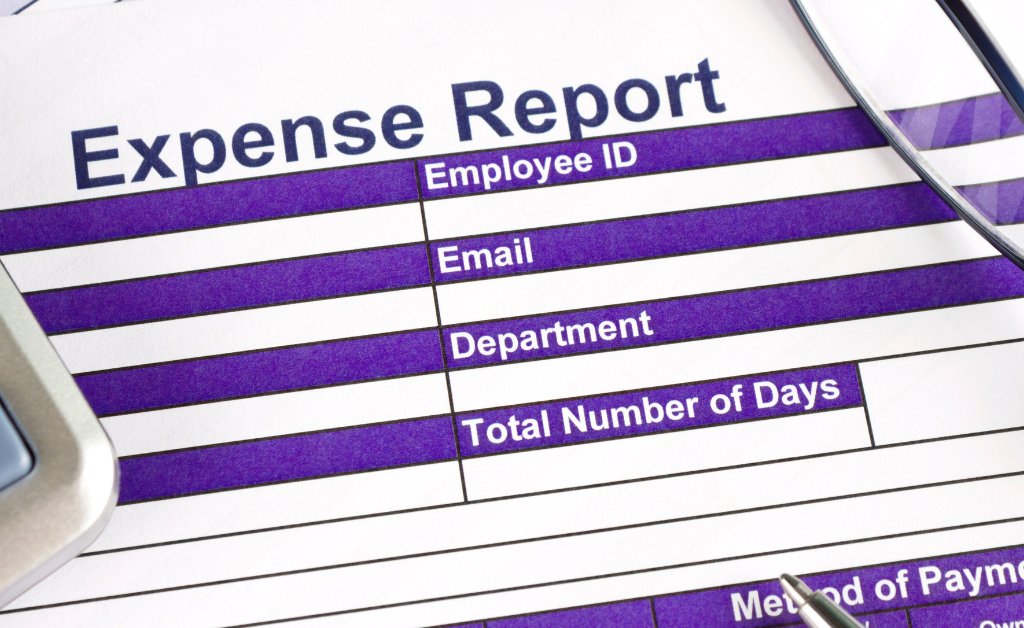Welcome to the realm of streamlined travel finance – the Travel Expense Report Template. In the fast-paced world of business and personal journeys, managing expenses efficiently is a necessity. This article is your gateway to mastering the art of expense reporting. Discover the key components, user-friendly design tips, and detailed categories that make up a robust template. Learn how to handle foreign expenses, ensure policy compliance, and seamlessly integrate reports with accounting systems. Join us on a journey to simplify your financial record-keeping and enhance the way you manage travel expenses. Let’s delve into the essentials of Travel Expense Report Templates for a more organized and hassle-free approach to expense tracking.
Introduction to Travel Expense Reports

In both personal and professional realms, tracking and managing expenses associated with travel is a fundamental aspect of financial responsibility. A Travel Expense Report serves as a systematic tool to document and organize these expenditures. This introductory section aims to underscore the importance of maintaining a meticulous record of travel expenses, shedding light on its benefits for individuals and businesses alike.
Why Track Travel Expenses: Whether you’re a business professional on a corporate trip or an individual exploring new destinations, keeping tabs on your travel expenses is pivotal. It provides a transparent view of where your money goes, helping you make informed financial decisions and stay within budget.
Benefits for Individuals: For individuals, a well-organized travel expense report can simplify personal budgeting. It offers a clear breakdown of expenditures, allowing individuals to manage their finances efficiently, identify spending patterns, and plan future trips more prudently.
Benefits for Businesses: In the corporate landscape, businesses rely on accurate expense reporting for financial control and compliance. Expense reports enable organizations to monitor travel costs, ensure adherence to company policies, and facilitate the reimbursement process for employees.
Introduction to Travel Expense Report Templates: At the heart of effective expense management lies the Travel Expense Report Template. This tool provides a structured framework for recording various expenses incurred during travel. It is designed to enhance accuracy, streamline the reporting process, and ultimately contribute to better financial decision-making.
Streamlining Reimbursement Processes: One of the primary functions of a Travel Expense Report Template is to streamline the reimbursement process. By presenting a detailed breakdown of expenses supported by receipts and documentation, the template facilitates a smoother and faster reimbursement experience for individuals and employees.
Key Components of a Travel Expense Report Template
A well-structured Travel Expense Report Template is built upon key components that ensure comprehensive tracking and accurate reporting of expenditures. This section breaks down these essential elements, guiding both individuals and businesses in creating effective templates tailored to their needs.
Identification Information: The template should start with spaces for identification details, including the traveler’s name, employee ID (for business-related reports), date of the trip, and purpose of the travel. Clear identification ensures proper record-keeping and easy reference.
Expense Categories: Organizing expenses into specific categories is vital for clarity and efficient analysis. Common categories include transportation, accommodation, meals, and miscellaneous expenses. Creating subcategories within these can provide a more granular view of spending patterns.
Date and Description of Expenses: For each expense, include the date of the transaction and a concise description. This information not only aids in tracking but also serves as documentation for later reference and verification.
Amount Spent: Clearly denote the amount spent for each expense. Aligning this with the identified categories makes it straightforward to understand where the majority of the budget is allocated.
Currency Conversion Details (if applicable): For international travel, include a section for currency conversion details. Clearly state the local currency, the converted amount, and the exchange rate used. This ensures accurate reporting and reimbursement in the traveler’s home currency.
Receipt Attachment Section: Dedicate a space for attaching receipts or invoices related to each expense. Receipts act as supporting documentation and are crucial for compliance with policies and for financial auditing purposes.
Mileage and Transportation Details: For those using personal vehicles or public transportation, include sections for mileage calculations or transportation details. This provides a comprehensive view of travel-related costs beyond traditional expenses.
Per Diem or Allowance Section: If applicable, incorporate a section for per diem or daily allowance. This is especially relevant for business travelers who receive fixed daily amounts for meals and incidental expenses. Clear documentation in this section ensures adherence to company policies.
Comments or Notes Section: Allow space for additional comments or notes. Travelers can use this section to provide context or explanations for specific expenses, aiding in transparency and understanding during the review process.
Policy Compliance Checkbox: Integrate a checkbox or indicator for policy compliance. This serves as a quick reference to ensure that each expense adheres to company policies or personal spending limits.
Creating a User-Friendly Expense Report Template
Designing a user-friendly Travel Expense Report Template is paramount for encouraging accurate reporting and fostering a seamless experience for both individuals and employees. This section focuses on practical tips to enhance the user-friendliness of your expense template.
Clear and Intuitive Layout: Start by creating a clean and organized layout. Ensure that each section is clearly defined, making it easy for users to input information without confusion. A well-structured template enhances readability and reduces the likelihood of errors.
Use of Color-Coding and Highlighting: Incorporate color-coding or highlighting to distinguish different sections and categories. For example, use different colors for transportation, accommodation, meals, and miscellaneous expenses. This visual aid can expedite the review process and improve overall comprehension.
Simple Instructions: Provide straightforward and concise instructions throughout the template. Clarify what information is required in each section and how users should fill out the form. Eliminating ambiguity reduces the chances of errors and ensures consistency in reporting.
Dropdown Menus and Checkboxes: Simplify data entry by incorporating dropdown menus or checkboxes for common categories or expense types. This not only accelerates the reporting process but also maintains consistency in the way information is presented.
Automated Calculations: Implement automated calculations wherever possible. For instance, if mileage is included, set up formulas to automatically calculate the total amount based on the distance traveled and the applicable reimbursement rate. Automation reduces manual errors and enhances accuracy.
Mobile-Friendly Format: Recognize the prevalence of mobile devices for on-the-go reporting. Ensure that your template is compatible with mobile devices, allowing users to input expenses conveniently from their smartphones or tablets.
Include Help and Support Sections: Incorporate help sections or tooltips throughout the template. These can provide additional information about specific categories, offer guidance on currency conversion, or explain company policies. Users can refer to these sections for quick assistance.
Editable and Saveable PDFs: If distributing the template in a digital format, consider using editable and saveable PDFs. This allows users to fill out the form digitally, save their progress, and easily share the completed report with relevant parties.
Regularly Update and Improve: Keep the template dynamic by regularly updating and improving it based on user feedback and evolving needs. Embrace an iterative approach to ensure that the template remains user-friendly and aligns with changing reporting requirements.
Provide Training or Guidelines: Accompany the template with training materials or guidelines. Offer a brief tutorial on how to use the template effectively, covering common challenges and best practices. This empowers users to navigate the reporting process with confidence.
Detailed Expense Categories and Subcategories

In crafting an effective Travel Expense Report Template, a crucial aspect is defining detailed expense categories and subcategories. This section delves into the nuances of these classifications, providing guidance on how to create a template that captures a comprehensive range of expenditures.
Transportation Expenses: Break down transportation costs into subcategories such as airfare, train tickets, rental cars, and fuel for personal vehicles. For each subcategory, include spaces for documenting the date, mode of transport, and associated expenses.
Accommodation Expenses: Detail accommodation expenses by including subcategories for hotel stays, Airbnb rentals, or other lodging arrangements. Capture information like check-in and check-out dates, nightly rates, and any additional fees.
Meals and Food Expenses: Categorize meals and food expenses into subcategories for breakfast, lunch, dinner, and snacks. Consider adding fields for the date, location, and a breakdown of meal costs. For business travelers, incorporating per diem rates can simplify reporting.
Miscellaneous Expenses: Create a miscellaneous category to account for various incidental expenses. This may include charges for Wi-Fi, tips, parking fees, or any other miscellaneous costs encountered during the trip.
Entertainment Expenses: For leisure or business-related entertainment, create subcategories such as tickets for shows, events, or client dinners. Include spaces for the date, venue, purpose, and amount spent.
Business Expenses: If the travel is work-related, segment business expenses into subcategories like conference fees, business materials, or equipment rental. Specify the date, purpose, and detailed cost breakdown for each business-related expense.
Currency Conversion Expenses: For international travel, incorporate a dedicated section for currency conversion. Include subcategories for exchange fees or charges, along with details on the currency exchange rate used.
Mileage and Transportation Costs: For those using personal vehicles, include a mileage category. Specify the starting and ending points, total distance traveled, and the applicable reimbursement rate. This section is essential for accurate reimbursement calculations.
Per Diem or Daily Allowance: If your organization provides a daily allowance for meals and incidental expenses, include a per diem section. Outline the daily rate, duration of the allowance, and the total allowance amount.
Documentation and Receipts: Integrate a section emphasizing the importance of documentation. Encourage users to attach receipts for each expense, emphasizing that proper documentation is vital for policy compliance and financial auditing.
Receipt Management and Documentation
In the realm of Travel Expense Reporting, meticulous receipt management and documentation play a pivotal role in ensuring transparency, compliance, and accuracy. This section delves into the importance of receipts, strategies for effective management, and their role in supporting expense claims.
The Significance of Receipts: Receipts serve as tangible evidence of incurred expenses during travel. They validate the legitimacy of reported costs and act as a crucial component for policy compliance, financial audits, and reimbursement processes.
Strategies for Effective Receipt Management:
- Prompt Collection: Encourage travelers to collect receipts promptly after each transaction. This minimizes the risk of losing or forgetting receipts, ensuring a more accurate and complete expense report.
- Digital Receipts: Embrace digital solutions for receipt management. Advise travelers to use mobile apps or scan receipts, reducing the risk of physical loss and facilitating efficient record-keeping.
- Categorization: Instruct users to categorize and organize receipts based on expense categories. This simplifies the process of attaching the correct receipt to the corresponding expense entry in the report.
- Backup Copies: Stress the importance of creating backup copies of receipts, especially for critical expenses. In case of misplaced or damaged receipts, having a duplicate ensures comprehensive documentation.
- Compliance with Policies: Reinforce adherence to company policies regarding receipt requirements. Clearly communicate the threshold for expenses that necessitate receipts and the consequences of non-compliance.
Role of Receipts in Expense Reporting:
- Verification of Expenses: Receipts serve as concrete evidence to verify the legitimacy of reported expenses. This is crucial for maintaining the integrity of the expense reporting process.
- Policy Adherence: In cases where company policies dictate specific spending limits or eligible expenses, receipts become the primary means of ensuring compliance. They offer a detailed breakdown of each transaction.
- Auditing and Accountability: Receipts play a vital role in financial audits. They provide auditors with a transparent trail of expenses, fostering accountability and ensuring that financial records align with actual expenditures.
Documentation Best Practices:
- Legibility: Emphasize the importance of legible receipts. Illegible or unclear receipts may lead to misunderstandings during the review process and can hinder the auditing of financial records.
- Complete Information: Ensure that receipts contain complete information, including the date of the transaction, the name of the vendor, a detailed description of the items or services purchased, and the total amount.
- Annotations or Comments: Encourage users to add annotations or comments on receipts when necessary. This can provide context or explanations for specific expenses, offering clarity during the review process.
- Digital Storage: If utilizing digital receipts, ensure proper digital storage. Back up digital copies securely and provide clear instructions on how to attach or upload these digital receipts within the expense reporting system.
Currency Conversion and Foreign Expenses
International travel introduces the complexity of dealing with different currencies and foreign expenses. This section explores the nuances of currency conversion, providing guidance on how to handle foreign expenditures in a Travel Expense Report Template.
Understanding Currency Conversion: When dealing with expenses in multiple currencies, it’s crucial to understand the basics of currency conversion. Exchange rates fluctuate, impacting the accurate representation of expenses in the traveler’s home currency.
Incorporating a Currency Conversion Section: Integrate a dedicated section in the Travel Expense Report Template for currency conversion. Include fields such as:
- Date of Conversion: Specify when the currency conversion occurred.
- Exchange Rate Used: Clearly state the exchange rate applied for the conversion.
- Converted Amount: Indicate the equivalent amount in the traveler’s home currency.
Strategies for Currency Conversion:
- Use Consistent Exchange Rates: Establish a consistent approach to using exchange rates throughout the report. It’s advisable to use the exchange rate applicable on the date of the expense to maintain accuracy.
- Real-Time Exchange Rate Tools: Encourage travelers to use real-time exchange rate tools or apps for accurate and up-to-date conversion rates. This ensures that the converted amounts reflect current market rates.
- Specify Source of Exchange Rate: When documenting currency conversion, specify the source of the exchange rate used. Whether obtained from financial institutions, online platforms, or company policies, transparency is key.
Managing Foreign Expenses:
- Separate Categories for Foreign Expenses: Create distinct categories or subcategories for foreign expenses. This enables a clear distinction between expenditures in the traveler’s home country and those incurred abroad.
- Receipts in Local Currency: Encourage travelers to collect receipts in the local currency of the country they are visiting. This simplifies the documentation process and provides a clear record of the expenses in the local context.
- Consistent Reporting Format: Standardize the reporting format for foreign expenses. Clearly communicate whether the amounts should be reported in the local currency, the traveler’s home currency, or both.
Considerations for Business Travelers:
- Company Policies on Currency Conversion: Communicate company policies regarding currency conversion. Clarify whether there are specific guidelines on the use of exchange rates and how the company handles reimbursement for foreign expenses.
- Integration with Corporate Credit Cards: For business travelers using corporate credit cards, explore whether the credit card statements provide conversion details. This can simplify the reporting process for foreign expenses.
Documentation and Audit Trail:
- Retain Original Receipts: Even if converting foreign expenses into the traveler’s home currency, retain the original receipts in the local currency. This ensures a comprehensive audit trail and supports policy compliance.
- Annotations for Currency Conversion: If necessary, encourage users to include annotations or comments in the template to explain any nuances related to currency conversion for specific expenses.
Policy Compliance and Approval Processes

Ensuring policy compliance is paramount in the realm of travel expense reporting. This section delves into the importance of aligning expense reports with organizational policies, the approval process, and strategies for maintaining adherence to established guidelines.
Importance of Policy Compliance: Company policies regarding travel expenses are established to maintain financial control, uphold transparency, and align spending with organizational objectives. Adhering to these policies is essential for responsible financial management.
Clear Communication of Policies: Begin by clearly communicating travel expense policies to all individuals involved in reporting. This includes details on eligible expenses, spending limits, documentation requirements, and any specific guidelines unique to the organization.
Alignment with Spending Limits: The Travel Expense Report Template should reflect and enforce spending limits set by the organization. Clearly state these limits for various expense categories, ensuring that users understand the maximum allowable amounts for each type of expenditure.
Documenting Policy Acknowledgment: Integrate a section in the template where users acknowledge their understanding and adherence to company policies. This acknowledgment serves as a record of the traveler’s commitment to comply with established guidelines.
Pre-Approval Processes: Implement a pre-approval process for significant expenses, especially in the case of business travel. This involves obtaining approval from relevant authorities before incurring certain costs, ensuring alignment with budgetary constraints and policy guidelines.
Designated Approval Authorities: Define a clear hierarchy of approval authorities within the organization. Specify who is responsible for reviewing and approving travel expense reports. This could range from immediate supervisors to finance or accounting departments, depending on the organization’s structure.
Automated Approval Workflows: Leverage technology to streamline the approval process. Implement automated approval workflows within the expense reporting system, ensuring that reports progress through the necessary stages of review efficiently.
Timely Submission and Approval: Establish guidelines for the timely submission of expense reports and subsequent approvals. Timeliness is crucial for financial reporting accuracy and ensures that employees are reimbursed promptly.
Audit Trails for Accountability: Incorporate features in the template or expense reporting system that create audit trails. These trails document changes made to the report, providing transparency and accountability in case of disputes or discrepancies.
Exception Handling and Resolutions: Define procedures for handling exceptions or discrepancies in expense reports. Establish a mechanism for resolving issues, whether they involve policy violations, missing documentation, or discrepancies in reported amounts.
Continuous Policy Review and Updates: Company policies are subject to change based on evolving business needs or external factors. Regularly review and update travel expense policies, and communicate any changes promptly to all relevant parties.
Training on Policy Changes: When policy changes occur, conduct training sessions or provide resources to educate users on the updated guidelines. Ensuring that all individuals are aware of and understand policy revisions is crucial for compliance.
Encouraging Compliance Through Transparency: Foster a culture of transparency regarding policy compliance. Communicate the importance of adhering to policies for the overall financial health of the organization and the benefits it brings to both individuals and the company.
In conclusion, mastering the intricacies of travel expense reporting involves more than just tracking expenditures—it requires a strategic approach that aligns with organizational policies and ensures financial transparency.
From creating a user-friendly template with detailed categories to managing receipts, handling foreign expenses, and enforcing policy compliance, each element contributes to a comprehensive and efficient reporting process.
By emphasizing the importance of clear communication, timely approvals, and continuous policy review, organizations can instill a culture of responsibility and accountability in managing travel-related finances.
As we conclude this guide, remember that an optimized Travel Expense Report Template not only streamlines reimbursement processes but also plays a vital role in maintaining the financial health of both individuals and organizations.
Implement these insights to enhance the effectiveness of your expense reporting system, facilitating a seamless and transparent approach to managing travel expenses. Safe travels and responsible financial management await!
